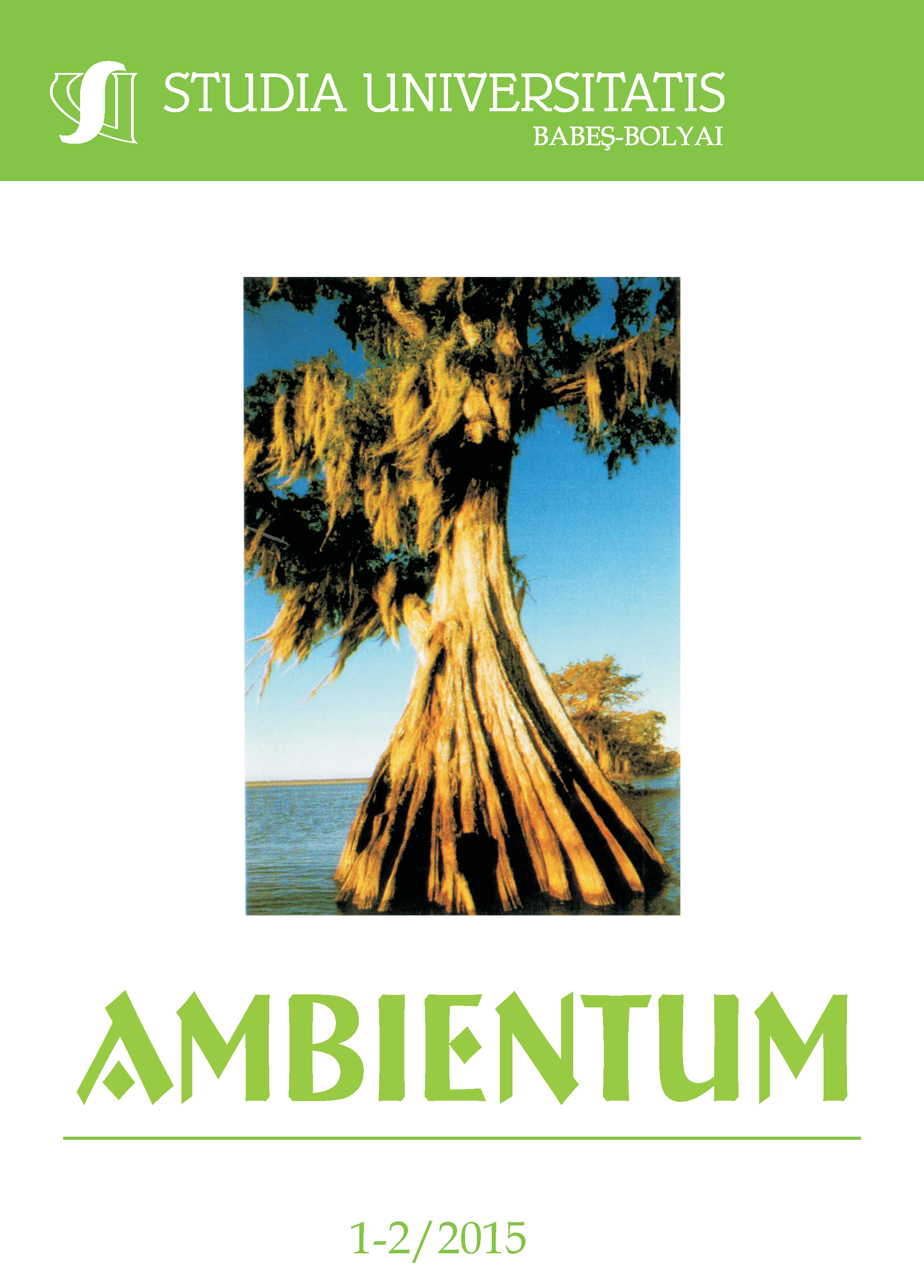LIMONENE IN SCHOOL INDOOR ENVIRONMENTS – SOURCE AND LEVEL OF CONTAMINATION
Keywords:
indoor air quality, limonene, school, children, sourceAbstract
Little information currently exists regarding indoor air pollution with limonene in school environments. This study’s aim is to assess the contamination level of limonene and identify possible emission sources inside classrooms because, it is well known that exposure to higher levels of monoterpenes may have important human health effects, children being more susceptible than adults. A field study was conducted in two classrooms from different schools in Alba County, Romania by tracing the evolution of the pollutant over one school day (inside and outside simultaneously) and filling up a specific check-list. Indoor limonene levels ranged between 0.064 – 0.236 mg/m3 for school ro-s1 and 0.022 – 0.164 mg/m3 for ro-s2 school, exceeding in both cases outdoor levels, therefore concluding that indoor sources have been prevalent. Among them, laminate floorings, wooden construction materials, furniture, cleaning agents and living plants have been identified as common for both classrooms. Outdoor air quality didn’t have an important effect over the indoor environment, poor ventilation determining the low influence of outdoor concentration levels.
References
Annesi-Maesano I., Baiz N., Banerjee S., Rudnai P., Rive S, and the SINPHONIE GROUP, 2013. Indoor air quality and sources in schools and related health effects. J Toxicol Environ Health B Crit Rev. pp. 491-550.
European Agency for Safety and Health at Work. The occupational safety and health of cleaning workers, 2009, Luxembourg: Office for Official Publications of the European Communities.
Heine K., Eckhardt A., 2014, Limit Values and Guideline Values in Regulatory Toxicology in Reichl F.X. and Schwenk M. edt. Regulatory Toxicology, Verlag Berlin Heidelberg, Berlin, pp. 875-898.
Huang Y., Ho K.F., Ho S.S. H., Lee S.C., Yau P.S., Cheng Y., 2011, Physical parameters effect on ozone-initiated formation of indoor secondary organic aerosols with emissions from cleaning products. Journal of Hazardous Materials, 192, pp. 1787– 1794.
Kovacs M.H., Roba C., Rosu C., Neamtiu I., Gurzau E., 2013, Assessment of air quality from primary schools classrooms and the presence of volatile organic compounds (VOCs). Carpathian Journal of Earth and Environmental Sciences, 8(4), pp. 55 – 61.
Krol S., Namieśnik J., Zabiegała B., 2014, α-Pinene, 3-carene and d-limonene in indoor air of Polish apartments: The impact on air quality and human exposure. Science of the Total Environment, 468–469, pp. 985–995.
Nazaroff W.W., Coleman B.K., Destaillats H. et al., 2006, Indoor Air Chemistry: Cleaning Agents, Ozone and Toxic Air Contaminants. Final Report: Contract No. 01-336, Prepared for the California Air Resources Board and the California Environmental Protection Agency: California Air Resources Board by the Department of Civil and Environmental Engineering, University of California at Berkeley and the Lawrence Berkeley National Laboratory.
Pio C.A., Nunes T.V., Castro L.M., Lopes D.A., 2001, Volatile and particulate organic compounds in the ambient air of eucalyptus forest in Portugal during the FIELDVOC'94 campaign. Chemosphere, 3, pp. 283–293.
Ridley I., Fox J., Oreszczyn T., Hong, S., 2003, The impact of replacement windows on air infiltration and indoor air quality in dwellings. International Journal of Ventilation, 1(3), pp. 209-218.
Seung H., Wan K.J., 2012, Volatile organic compound concentrations, emission rates, and source apportionment in newly-built apartments at pre-occupancy stage. Chemosphere, 89, pp. 569–578.
Smedje G., Norbäck D., 2001, Irritants and allergens at school in relation to furnishings and cleaning. Indoor Air, 11 (2), pp. 127-133.
Takigawa T., Wang B.L., Saijo Y., Morimoto K., Nakayama K., Tanaka M., et al., 2009, Relationship between indoor chemical concentrations and subjective symptoms associated with sick building syndrome in newly built houses in Japan. Int Arch Occup Environ Health, 83, pp. 225–235.
Zabiegala B., Gorecki T., Yang S.Y., Son K.C., Kays S.J., 2009, Volatile Organic Compounds Emanating from Indoor Ornamental Plants. HortScience, 44 (2), pp. 396–400.
Downloads
Published
How to Cite
Issue
Section
License
Copyright (c) 2015 Studia Universitatis Babeș-Bolyai Ambientum

This work is licensed under a Creative Commons Attribution-NonCommercial-NoDerivatives 4.0 International License.





 ISSN (online): 2065-9490 | ISSN (print): 1843-3855 | ISSN-L: 2065-9490
ISSN (online): 2065-9490 | ISSN (print): 1843-3855 | ISSN-L: 2065-9490